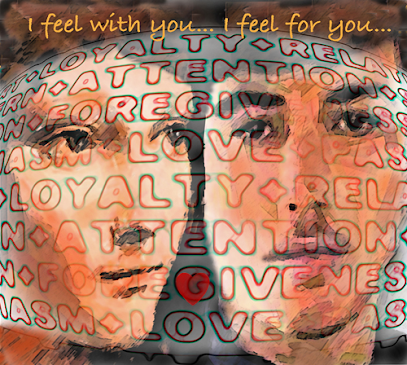Scores and Transgressions
Frances Glessner Lee’s “Nutshell Studies of Unexplained Death” constitute an unparalleled confluence of forensic rigor and artisanal fastidiousness, manifesting as hyperreal, dollhouse-scale dioramas that subvert the ostensible innocence of childhood miniatures with the sinister gravity of homicide investigation. These meticulously crafted tableaux, far from mere curios, function as pedagogical apparatuses for inculcating investigative acumen in forensic trainees, compelling them to interrogate the veracity of physical evidence and discern the latent narratives inscribed within the detritus of domesticity. Lee’s obsessive attention to verisimilitude—hand-rolled cigarettes, minutely knitted socks, and bullet holes rendered with thumbtacks—transmutes the familiar into the uncanny, rendering each scene a palimpsest of violence and suppressed histories.
The genesis of these dioramas is inextricably entwined with Lee’s own liminal position within the patriarchal strictures of early twentieth-century America. An heiress to the International Harvester fortune, Lee eschewed the solipsism of privilege for the Sisyphean labor of forensic elucidation, appropriating the domestic arts—traditionally relegated to feminine spheres—as the very tools of her subversive craft. Her workshop, sequestered in the upper echelons of her estate, became a sanctum of forensic creativity, where the boundaries between art and science, memory and evidence, were ceaselessly interrogated and redrawn.
Each Nutshell is a microcosm of mid-century American domesticity, yet the illusion of order is invariably ruptured by the irruption of chaos: a body sprawled in a sanguinary tableau, quotidian objects transmogrified into cryptic signifiers of trauma. The viewer, seduced by the diminutive charm of the mise-en-scène, is inexorably drawn into a hermeneutic labyrinth, forced to parse the semiotics of disorder—Is a half-off shoe a mere accident, or a vestige of struggle? Does the placement of a purse or the smudge of lipstick bespeak a narrative of despair or malevolence? These are not mere rhetorical flourishes, but the very crucible in which the observer’s deductive faculties are forged.
Lee’s pedagogical philosophy was predicated on the conviction that forensic investigation is as much an art of perception as it is a science of evidence. Her seminars at Harvard, attended by a motley assemblage of law enforcement professionals, were orchestrated as intellectual crucibles, where the ostensible banality of domestic interiors became the locus of epistemological inquiry. The Nutshells, ensconced in temperature-controlled chambers, were not to be “solved” in the conventional sense, but rather to be scrutinized for the infinitesimal anomalies that might unravel the skein of obfuscation spun by the perpetrator.
The psychological resonance of Lee’s work extends beyond the didactic, permeating the interstices of memory, trauma, and the uncanny. The act of sifting through the remnants of a life—be it the detritus of a hoarder’s abode or the meticulously curated mise-en-scène of a Nutshell—becomes an exercise in both forensic and existential archaeology. Objects, stripped of their utilitarian immediacy, become reified as tokens of loss, rage, or unresolved enigma; the boundaries between evidence and relic, between artifact and memento mori, dissolve in the crucible of investigation.
In the contemporary moment, as the ruins of industrial modernity yield to the inexorable march of gentrification and technological surveillance, Lee’s dioramas endure as both mnemonic devices and cautionary allegories. The forensic gaze, once confined to the corporeal and the tangible, now extends into the spectral domains of memory and digital residue. The Nutshells, with their exquisite density of detail and their relentless demand for interpretive acuity, remain as enigmatic and inexhaustible as the mysteries they were designed to elucidate—testaments to the perennial tension between order and chaos, knowledge and uncertainty, in the relentless pursuit of truth.
WORDS TO BE NOTED-
Here are 12 challenging vocabulary words from the above passage, selected for their complexity and less frequent usage:
-
Confluence – the junction or coming together of different elements or ideas, especially in a significant way.
-
Artisanal – relating to or characteristic of an artisan; made in a traditional or non-mechanized way.
-
Fastidiousness – the quality of being very attentive to and concerned about accuracy and detail.
-
Ostensible – stated or appearing to be true, but not necessarily so.
-
Pedagogical – relating to teaching or education.
-
Verisimilitude – the appearance of being true or real; likeness or resemblance to reality.
-
Palimpsest – something reused or altered but still bearing visible traces of its earlier form.
-
Liminal – relating to a transitional or initial stage of a process; occupying a position at, or on both sides of, a boundary or threshold.
-
Sisyphean – (from the myth of Sisyphus) describing a task that can never be completed; endless and ineffective.
-
Transmogrified – transformed, especially in a surprising or magical manner.
-
Hermeneutic – concerning interpretation, especially of texts or symbolic systems.




Comments
Post a Comment